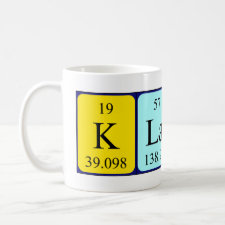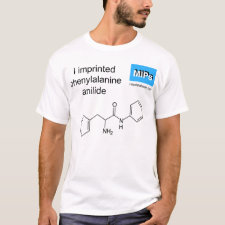
Authors: Sellergren B, Lepistö M, Mosbach K
Article Title: Highly enantioselective and substrate-selective polymers obtained by molecular imprinting utilizing noncovalent interactions - NMR and chromatographic studies on the nature of recognition.
Publication date: 1988
Journal: Journal of the American Chemical Society
Volume: 110
Issue: (17)
Page numbers: 5853-5860.
DOI: 10.1021/ja00225a041
Abstract: By use of the molecular imprinting technique, highly enantioselective and substrate-selective polymers were prepared by utilizing noncovalent interactions between the print molecule (L-phenylalanine derivatives) and methacrylic acid monomers. In the chromatographic mode, such polymers resulted in almost base-line separation of the enantiomers of the respective print molecule (phenylalanine anilide) with a maximum separation factor (a) of 3.5. The polymers also showed a high capacity (1.5 mg of racemate/g of polymer with optically pure peak maxima). Substrates other than the respective print molecule were in most cases poorly resolved. The selectivity was shown to be governed by the number and nature of interactions between the substrate and the polymer stationary phase, as well as the shape and rigidity of the substituents of the print molecule. In order to investigate these interactions, a chromatographic and 'H NMR study involving titration of the print molecule (phenylalanine anilide) with carboxylic acid was performed. The results were consistent with the existence of multimolecular complexes formed by electrostatic and hydrogen-bonding interactions and allowed an estimation of their formation constants and distribution. From this information, it was concluded that complexes between L-phenylalanine anilide and a maximum of three methacrylic acid monomers exist in solution prior to polymerization. On the basis of hydrogen bond theory, a model of the 1:2 complex is proposed. Finally, evidence is presented that is consistent with the existence of shape-specific cavities within the polymer.
Template and target information: L-phenylalanine anilide, L-phenylalanine ethylamide, L-phenylalanine ethyl ester, L-p-aminophenylalanine anilide



Join the Society for Molecular Imprinting

New items RSS feed
Sign-up for e-mail updates:
Choose between receiving an occasional newsletter or more frequent e-mail alerts.
Click here to go to the sign-up page.
Is your name elemental or peptidic? Enter your name and find out by clicking either of the buttons below!
Other products you may like:
 MIPdatabase
MIPdatabase









